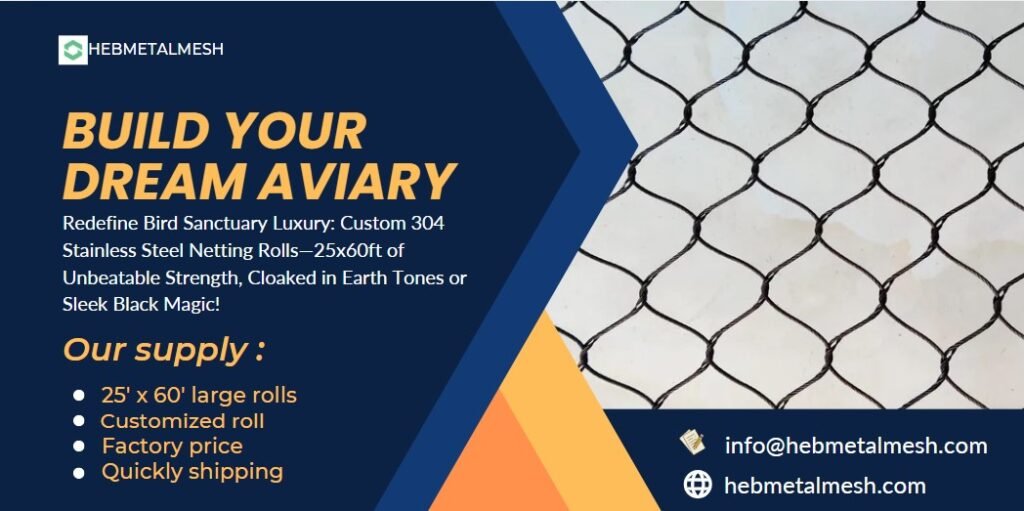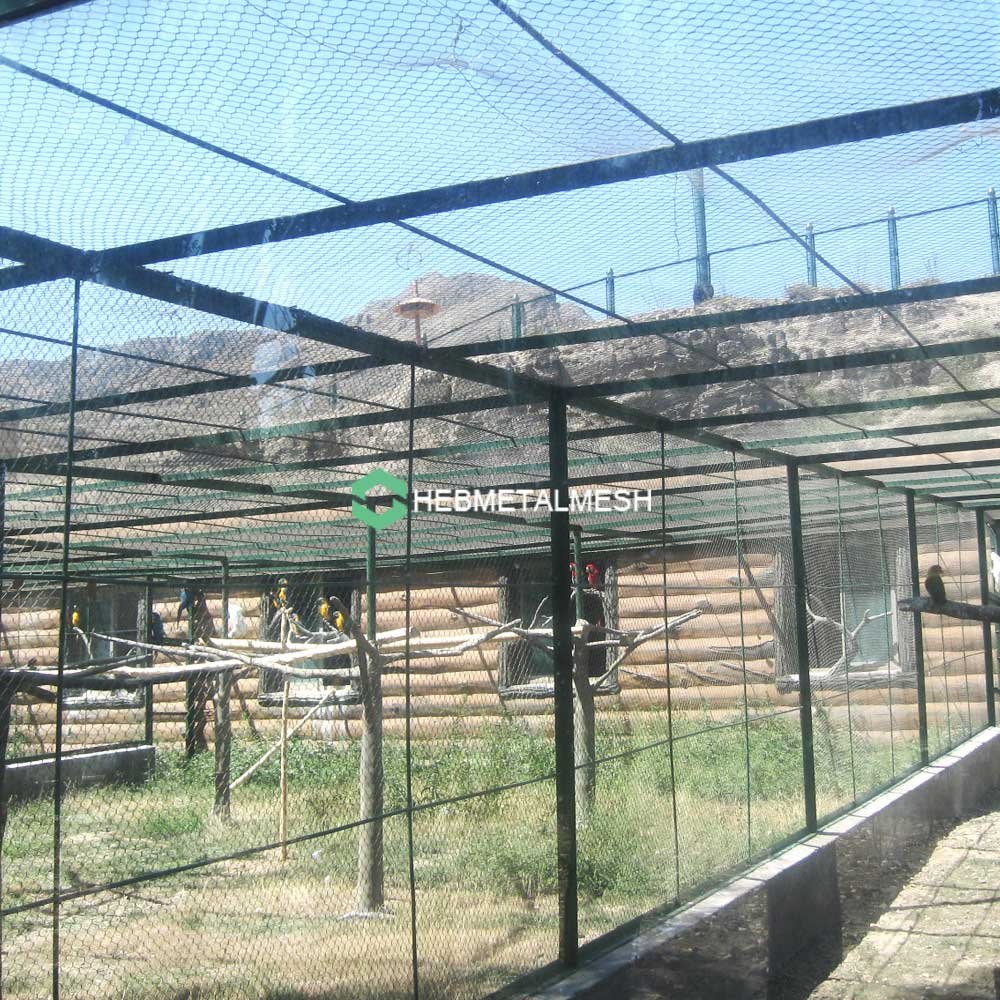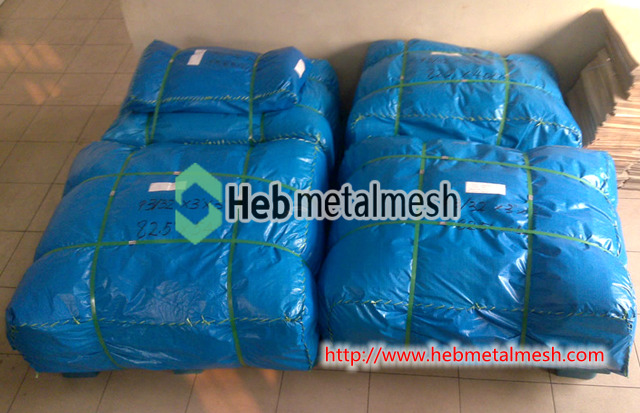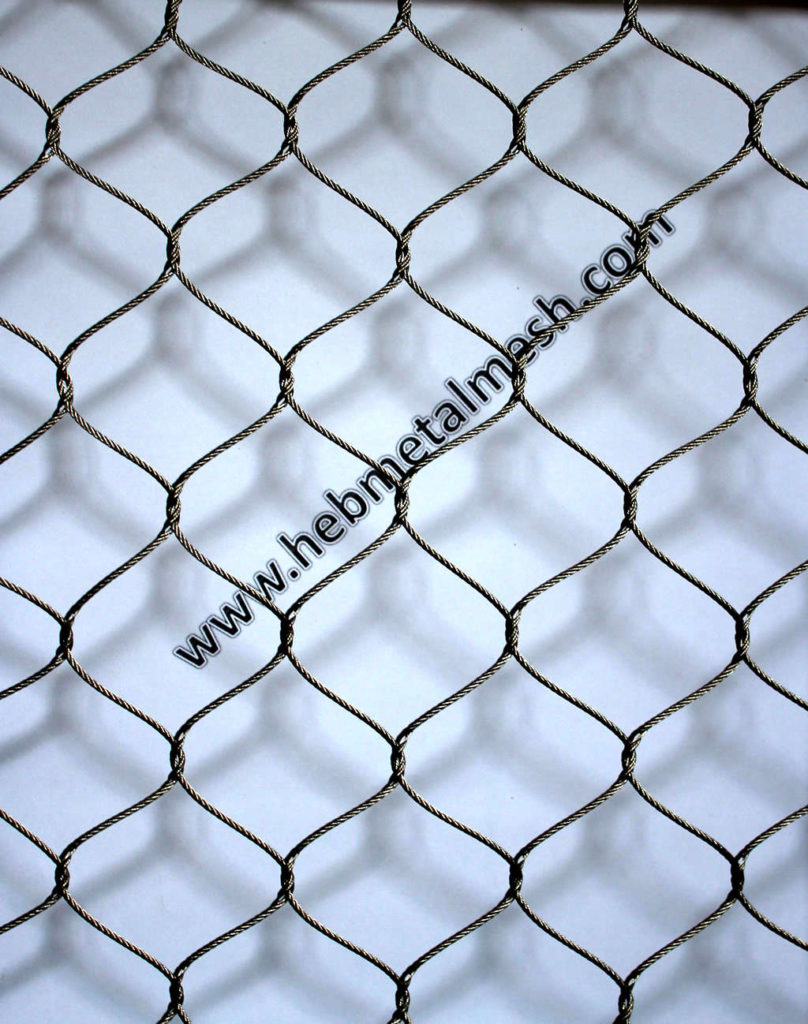Introduction: The World of Aviaries
The concept of an aviary captivates the imagination, evoking images of vibrant birds soaring gracefully within a spacious sanctuary. Essentially, an aviary is a large enclosure specifically designed for birds, blending features of captivity with elements reminiscent of their natural habitats. Unlike traditional birdcages that confine birds to small spaces, aviaries offer a more expansive environment where avian inhabitants can explore, fly, and socialize. This unique design not only enhances the well-being of the birds but also allows for a stimulating experience for visitors.
Aviaries serve multiple purposes beyond mere aesthetic appeal. They play a vital role in conservation efforts by providing a safe haven for endangered species, enabling breeding programs that aim to reintroduce birds into the wild. Additionally, they offer recreational opportunities, creating spaces for enthusiasts to observe and appreciate the beauty and diversity of avian life. Educational programs facilitated within these enclosures allow individuals of all ages to learn about bird behaviors, habitats, and the importance of biodiversity, fostering a deep-seated respect for nature.
The evolution of aviaries can be traced back to the Victorian era when elaborate birdhouses were a popular trend among the affluent. These structures laid the foundation for the modern aviaries we see today, which incorporate eco-friendly and sustainable design principles. Contemporary aviaries have undergone significant transformations, making use of advanced materials and design techniques to create environments that mimic the natural habitats of birds while ensuring their safety and comfort. As we delve deeper into the world of aviaries, it becomes evident that their significance in today’s society extends far beyond simple housing for birds, highlighting the intersection of conservation, education, and artistry.
Types of Aviaries
Aviaries come in various forms, each tailored to meet specific needs and preferences. Understanding the different types of aviaries can aid individuals in selecting the most suitable setup for their avian companions. The primary distinction lies between indoor and outdoor aviaries, each offering unique advantages and disadvantages. Indoor aviaries are typically smaller and can provide a stable climate, essential for birds sensitive to temperature fluctuations. However, they often lack the space and natural sunlight that outdoor aviaries can provide. Conversely, outdoor aviaries allow birds to experience natural behaviors in a more expansive setting, yet they require careful management of weather conditions and potential predators.
Furthermore, aviaries can be categorized as commercial or residential. Commercial aviaries, found in institutions such as zoos and sanctuaries, are designed to accommodate a larger variety of species, often featuring complex structures that mimic natural habitats. These setups generally prioritize the health and well-being of the birds, providing ample space and enrichment opportunities. Residential aviaries, typically located in backyards, are usually constructed with personal aesthetics and functionality in mind. They serve as a space for hobbyists to keep one or more birds comfortably while ensuring their welfare and social needs are met.
Additionally, design variations such as walk-in aviaries and suspended aviaries cater to different preferences. Walk-in aviaries allow for easy access to interact with the birds, making it simpler to maintain hygiene and provide enrichment. In contrast, suspended aviaries utilize vertical space, ideal for smaller yards but may limit human interaction. Specialized aviaries also exist for mixed-species arrangements, breeding, or rehabilitation purposes. These specialized designs ensure that varying species coexist harmoniously and may incorporate features that support nesting and recovery. This diversity in aviary types reflects the versatility of these habitats, tailor-fitting them to suit varied avicultural needs.
Designing an Aviary
Creating an aviary involves several essential elements that focus on both functionality and aesthetics, ensuring a healthy environment for its avian inhabitants. The first major consideration in designing an aviary is the location. It is crucial to select a site that takes into account local climate conditions, prevailing winds, and the availability of natural vegetation which can provide shade and shelter. Additionally, the surrounding natural habitat can influence the well-being of the birds; thus, proximity to other wildlife areas is advantageous for mimicry of a bird’s natural environment.
Dimensions of the aviary should also be carefully planned to accommodate the various species of birds that will reside within. Birds require ample space for flight and movement, and the design should incorporate optimal flight areas allowing birds to stretch their wings. A general rule is to ensure that flight paths are unobstructed and that the aviary is tall enough to encourage vertical movement, which is vital for many bird species.
Accessibility is another critical element in aviary design, as it facilitates maintenance activities and enhances the wellbeing of the birds. This includes properly placed access points for cleaning, feeding, and possible veterinary attention. In ensuring that the living conditions are both comfortable and safe, aviary designers should integrate various features. The inclusion of foliage provides natural cover and foraging opportunities, while water features can promote atmospheric humidity and serve as drinking and bathing spots. Additional design aspects could include strategically placed perches and nesting boxes that accommodate species-specific needs.
Overall, an effectively designed aviary should prioritize the safety and comfort of its residents while creating an engaging and visually appealing habitat that fosters the natural behaviors of birds. These design considerations are crucial in establishing an aviary that not only houses birds but also nurtures their health and instincts.
Choosing the Right Materials
When constructing an aviary, selecting the appropriate materials is a critical decision that influences the overall design, functionality, and longevity of the enclosure. Several options are available for the structure’s frame and surfaces, including wood, metal, and glass, each presenting its own set of advantages and disadvantages. For instance, wood can provide a natural look but may be susceptible to weathering and pests. Metal, particularly aluminum, can offer durability but might lack the warmth and aesthetic appeal that some aviary enthusiasts desire. Glass, while providing clear visibility, can pose a risk if the birds fly into it, potentially leading to injury.
However, the material that warrants particular attention is the aviary netting or mesh, as it serves as a barrier between the birds and the outside environment. The choice of netting is paramount for ensuring the safety and health of the inhabitants. While options like plastic or nylon netting exist, they often do not provide the same levels of durability and protection as stainless steel netting. Stainless steel aviary mesh is rapidly becoming the preferred choice among aviary builders and owners alike.
One notable advantage of stainless steel mesh is its resistance to corrosion and inclement weather, allowing it to withstand various environmental conditions without deteriorating over time. This durability ensures the aviary continues to protect its occupants effectively. Furthermore, stainless steel is sturdy enough to prevent potential predators from breaching the enclosure, thus offering peace of mind to bird owners. Aesthetically, stainless steel mesh maintains a sleek and professional appearance, complementing the overall design of the aviary. This combination of durability, safety, and visual appeal makes stainless steel netting a superior choice for anyone considering what is an aviary and the essential materials required for its construction.
Stainless Steel Netting: Why It’s Essential

Stainless steel netting plays a crucial role in the construction and maintenance of aviaries. This type of netting offers numerous advantages, making it a preferred choice among those who aim to provide a secure and comfortable environment for birds. One of the most significant benefits of stainless steel is its exceptional strength. Unlike traditional nets made from plastic or other materials, stainless steel can withstand significant pressure, making it difficult for predators to penetrate. This feature is vital for ensuring the safety of birds housed in aviaries, as it protects them from potential threats from outside.
Longevity is another aspect in which stainless steel excels. Designed to endure harsh environmental conditions, stainless steel netting resists rust, corrosion, and wear over time. This durability means that aviaries equipped with this kind of netting can last for many years without needing frequent replacements or repairs. The extended lifespan ultimately results in lower maintenance costs for aviary owners. Additionally, the low maintenance requirement enhances the overall living conditions for birds, as clean and secure housing is vital for their well-being.
Furthermore, stainless steel netting facilitates the safety of avian inhabitants by preventing them from escaping while allowing for ample ventilation and sunlight. This balance is essential in creating a natural environment that mirrors their habitats, which is beneficial for their health and happiness. The design of the netting allows for easy cleaning, which contributes significantly to maintaining hygiene standards within the aviary. A clean environment is crucial not only for the physical health of birds but also for preventing the spread of diseases.
In summary, utilizing stainless steel netting in aviary design is essential due to its strength, longevity, and protective capabilities. It ensures a safe haven for birds, contributing to both their physical safety and overall well-being.
Airflow and Ventilation Considerations
Proper airflow and ventilation are fundamental components of any aviary design. An aviary, by definition, is a spacious enclosure that allows birds to fly freely while providing a protected environment. Ensuring that this habitat is equipped with adequate ventilation contributes significantly to the overall comfort and health of the birds residing within. Appropriate airflow helps regulate temperature and humidity levels, which are crucial for the well-being of avian species. Insufficient ventilation can lead to unhealthy conditions, such as heat stress or respiratory issues, posing serious risks to the bird population.
To enhance airflow within the aviary, several design strategies can be employed. One effective method is the placement of openings that promote cross-ventilation. By positioning doors, windows, or vents strategically, air can circulate more freely, allowing fresh air to replace stale air. Additionally, the integration of mesh materials not only offers security but also contributes to improved airflow. Stainless steel netting, for instance, can serve dual purposes by act as a robust barrier while still allowing adequate air passage.
It is important to consider potential pitfalls in ensuring effective ventilation does not compromise the safety of the birds. For instance, overly large openings may invite predatory threats or allow the escape of the birds themselves. Therefore, careful attention must be paid to the size and positioning of any ventilation features. A balanced approach is essential, as it helps maintain both the security and health of the aviary. Regular monitoring and adjustments can ensure that airflow remains efficient, effectively sustaining a comfortable environment for the birds. By thoroughly addressing these ventilation considerations, one can create an aviary that supports the needs of its avian inhabitants while safeguarding their well-being.
Landscaping Your Aviary
Landscaping plays a pivotal role in the design of an aviary, effectively creating a nurturing environment that resembles the birds’ natural habitats. When planning out what is an aviary space, one must consider the types of flora and natural elements that will grace the area. Selecting bird-friendly plant species is crucial, as these not only provide essential shade and shelter but also enrich the aviary by offering foraging opportunities for its feathered inhabitants.
When choosing plants, it is beneficial to prioritize native species that are familiar to the birds in terms of food sources and shelter. Options might include a variety of shrubs, grasses, and flowering plants that attract natural insects and provide seeds, fruits, or nectar. These elements not only help sustain the birds but also contribute to a more vibrant ecosystem within the aviary. It is advisable to consider the growth patterns and colors of the plants, as they add depth and beauty to the entire setting, thereby enhancing the aviary’s aesthetic appeal.
Additionally, incorporating natural features such as rocks, logs, and water elements can further enrich the environment. Rocks can provide perching areas, while fallen logs can serve as resting spots and hiding places, creating a more stimulating atmosphere. Small water features, such as shallow ponds or birdbaths, are essential for hydration and can encourage birds to engage in bathing behavior, which is beneficial for their hygiene. Furthermore, these elements contribute to a sense of tranquility and mimic the natural landscapes they thrive in.
Ultimately, comprehensive landscaping of an aviary involves careful planning and a deep understanding of bird needs, balancing the visual appeal with the functional attributes that promote well-being and enrichment for the avian residents.
Legal and Ethical Considerations
The construction and maintenance of an aviary entail various legal and ethical responsibilities that prospective owners must thoroughly understand. One of the foremost concerns relates to bird ownership regulations, which can differ significantly by location. Many regions have laws governing the types of birds that can be kept as pets, especially concerning endangered or protected species. It is essential to research local laws to ensure compliance while engaging in this hobby. Understanding what is an aviary in the context of these laws not only fosters responsible ownership but also contributes to conservation efforts.
Furthermore, zoning regulations may apply to aviary construction, dictating what types of structures can be built and where. Before setting up an aviary, it’s crucial to check with local authorities to ensure that your plans adhere to zoning laws. This step is vital to avoid potential fines or the forced dismantling of your aviary. In addition, ethical practices in bird-keeping extend beyond legal requirements; they encompass the overall well-being of the avian inhabitants.
Ethical considerations in aviary ownership include providing adequate care, socialization, and habitat enrichment for the birds. Birds are social creatures that thrive in interactive environments. Therefore, owners must ensure that their aviary replicates a natural habitat to the best of their ability, allowing birds to engage in instinctual behaviors and maintain their physical and mental health. Responsible sourcing of birds is another vital aspect of ethical aviary practices, encouraging owners to adopt birds from shelters or reputable breeders rather than purchasing from questionable sources.
Moreover, an emphasis on conserving local avian species is paramount. Owners should consider how their aviary practices impact surrounding ecosystems. Prioritizing the well-being of both domesticated and wild birds will not only enhance the aviary experience but also contribute positively to the environment and biodiversity.
Faqs: What is An Aviary?
An aviary is a large enclosure or structure designed to house birds, allowing them to fly and move freely in a controlled environment. Aviaries can vary in size from small backyard structures to massive installations in zoos or conservation centers, often mimicking natural habitats to support bird health and behavior.
The primary purpose of an aviary is to provide birds with a safe, spacious environment that encourages natural behaviors like flying, nesting, and socializing. Aviaries are also used for conservation, breeding programs, educational displays, and offering bird enthusiasts a way to observe or care for multiple birds.
Common types include:
Public aviaries: Found in zoos, parks, or wildlife centers, often housing exotic or endangered species.
Private aviaries: Smaller setups in homes or gardens for pet birds like parrots or finches.
Walk-in aviaries: Large enclosures where humans can enter to interact with birds.
Specialized aviaries: Designed for specific species (e.g., waterfowl or tropical birds) with tailored climate and vegetation.
Aviaries are significantly larger than typical birdcages, enabling flight and group living. They prioritize replicating natural habitats with features like plants, perches, and water sources, whereas cages are smaller, portable, and meant for limited mobility or single-bird housing.
Yes! Key considerations include:
Space: Ensure adequate room for birds to fly.
Materials: Use durable, non-toxic mesh or wire.
Safety: Protect against predators and harsh weather.
Ventilation: Maintain airflow while preventing escapes.
Enrichment: Add perches, nesting areas, and plants.
Conclusion: The Joy of Aviaries
Creating and maintaining an aviary offers immense joy and satisfaction for both bird enthusiasts and casual observers alike. An aviary, provide a sanctuary for birds, allows individuals to nurture their love for avian life while promoting their well-being. The varied designs and types discussed in this article illustrate the adaptability of aviaries, catering to diverse needs and preferences. Whether one opts for a spacious garden aviary or a smaller indoor structure, the potential to foster a vibrant ecosystem of birds is rewarding.
In constructing an aviary, attention must be paid to the materials used, particularly the importance of stainless steel netting. This choice ensures safety and security for the birds while contributing to the overall durability of the structure. The combination of thoughtful design and quality materials creates an environment where birds can flourish, engaging in communal behaviors and enriching their natural instincts. Such settings not only promote physical health but also allow for mental stimulation, thereby enhancing the quality of life for the feathered inhabitants.
As you reflect on the insights presented, consider the possibilities of embarking on your aviary project. Embrace the opportunity to create a living space that celebrates the beauty of birds and their behaviors. Beyond personal enjoyment, participating in bird-keeping can also align with conservation efforts, fostering a greater appreciation for local wildlife. Supporting initiatives that advocate for bird habitats and sustainable practices can amplify your impact on avian life. The joy of an aviary extends beyond personal fulfillment, creating a ripple effect that contributes to ecological awareness and biodiversity preservation.


